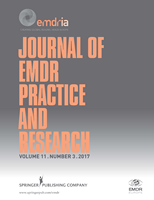
Dissociation of the Personality in Complex Trauma-Related Disorders and EMDR: Theoretical Considerations
As eye movement desensitization and reprocessing (EMDR) has been increasingly applied in complex trauma-related disorders, including complex dissociative disorders, and trauma-related borderline personality disorder, EMDR practice may benefit from theories developed to account for the
dissociative nature of these disorders, such as the theory of structural dissociation of the personality (TSDP). TSDP postulates that the personality of traumatized individuals is unduly divided in two basic types of dissociative subsystems or parts. One type involves dissociative parts primarily
mediated by daily life action systems or motivational systems. The other type involves dissociative parts, fixated in traumatic memories, primarily mediated by the defense action system. The more severe and chronic the traumatization, the more dissociative parts can be expected to exist. This
article presents the basics of TSDP, and a second article will provide guidelines for the treatment of complex trauma-related disorders based on this theory.
Keywords: DISSOCIATION; DISSOCIATIVE DISORDERS; EMDR (EYE MOVEMENT DESENSITIZATION AND REPROCESSING); INTEGRATION; PHASE-ORIENTED TREATMENT; STRUCTURAL DISSOCIATION OF THE PERSONALITY
Document Type: Research Article
Publication date: 01 May 2010
- The Journal of EMDR Practice and Research is no longer available to subscribers on Ingenta Connect. Please go to http://connect.springerpub.com/content/sgremdr to access your online subscription to Journal of EMDR Practice and Research.
- Access Key
- Free content
- Partial Free content
- New content
- Open access content
- Partial Open access content
- Subscribed content
- Partial Subscribed content
- Free trial content